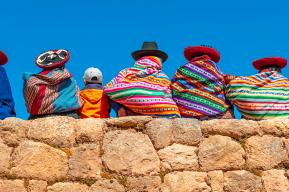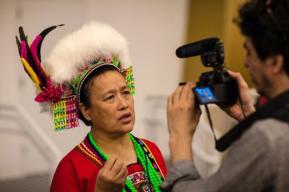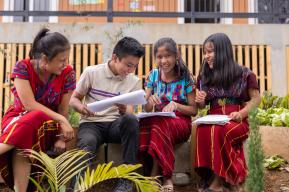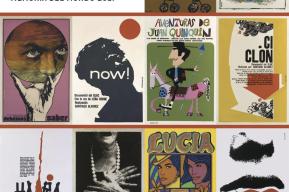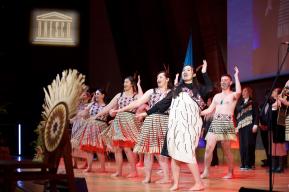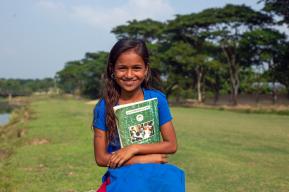Article
State-of-the-Art of Indigenous Languages In Research

To expand and enrich the knowledge base and encourage the global academic and scientific community to leverage the value residing in the intellectual assets and linguistic heritage of Indigenous peoples, a Global Call for Research Papers has been launched, inviting researchers from around the world to share their research outcomes within seven thematic areas, namely: (i) Sustainable development; (ii) Linguistic diversity and cultural heritage; (iii) Social inclusion and gender equality; (iv) Knowledge, education, and science; (v) Human rights; (vi) Technology, and (vi) Humanitarian Affairs.
This initiative, organized in the context of the International Year of Indigenous Languages (IYIL2019) and supported by the Government of Japan and the Government of Estonia, aims to support and promote Indigenous Languages worldwide, including in the academic and scientific domains.
Nearly 300 researchers from 63 countries submitted their articles in 2019, covering a range of issues related to minority, lesser-used, and Indigenous languages, and more widely, with the promotion of linguistic diversity and multilingualism.
An international peer review team composed of linguists, Indigenous researchers, leading experts with different specializations and language editors, was established to carry out a comprehensive analysis and preselect a smaller set of articles for publication. Throughout 2020-2021, the authors of the 39 selected research papers (27 in English, 8 in Spanish and 4 in French) collaborated with the international peer-review team to sharpen their arguments and conclusions and to integrate editorial comments. The final volume of the publication also includes articles produced by the peer-reviewers, summarizing the selection and review process, and providing an overview of the main thematic considerations, identifying gaps, challenges, and opportunities.
The concluding section highlights the main observations and recommendations for future research in the field of Indigenous Languages, including:
- Science and technology are realms in which Indigenous languages have not yet occupied a meaningful place. However, there is a great potential for digital technology to contribute to language documentation, revitalization, and promotion if the language is well researched and necessary resources produced for wider integration in public domain, particularly development of machine-based language solutions.
- In national politics and diplomacy, the prospects for Indigenous languages are limited. Yet, the data collected shows that multilingualism in the domain of public life is a powerful tool in fostering peaceful and democratic processes in society.
- In education, as many articles have shown, Indigenous languages can enhance the prospects of their users and their communities. Several authors highlighted the role of immersive educational programs and bilingual inclusive educational policies to foster language revitalization and challenge trends of cultural assimilation.
- The concept of gender equality was not addressed in isolation by the authors, which indicates a research gap to be more fully addressed in few works.
- Research results demonstrate that there is a link between language and traditional knowledge systems, including in relation to health and the environment, as they provide a foundation for sustainable development that is appropriate to local conditions, contexts, and needs.
- For a full realization of Indigenous language rights, the capacities Indigenous Peoples Organizations should be further strengthened on the issues related to the human right-based approach, gender equality, and international and national legal frameworks, and financial resources should be further deployed for the implementation of concrete actions.
- The incontrovertible fact that most Indigenous peoples have an oral culture and traditions highlights the urgent need for documentation, description, and revitalization efforts.
To launch the collection of research papers, a one-day webinar will be organized on 20 May 2022, with the participation of the researchers of the selected articles, peer-reviewers, and other experts.
For more information about the event, please click here.
Key facts
- Nearly 300 papers (278 research papers, of which 195 in English, 6 in French and 77 in Spanish) were submitted to the Global Call by researchers and practitioners from 63 countries, specialized in different fields.
- The top 15 countries by the number of research papers, accounting for a total of 203 research papers (73% of the grand total) were Mexico (48), United States of America (31), India (25), United Kingdom (15), Brazil (11), Canada (11), Australia (8), Plurinational State of Bolivia (8), Colombia (8), France (8), Pakistan (7), Philippines (7), Peru (6), Germany (5), South Africa (5).
- Most research papers submitted focused on the theme of cultural heritage (179) and Indigenous education and knowledge (167), followed by humanitarian affairs and peacebuilding (76), and social inclusion and urbanization (78). Other papers were submitted under science and health (46), technology and digital activism (33), and gender equality (24).
- Following review, 39 research papers (27 in English, 4 in French, 8 in Spanish) from 26 countries were selected for publication. The selected articles were once again edited by English, French and Spanish editors.
- Each peer-reviewer produced an article summarizing the review process and providing an overview of the main thematic considerations. Overall, this multilingual collection includes 48 articles by researchers and analytical pieces by peer reviewers from 30 countries. The authors of the volume amount to 109 (62 Female and 47 Male).


